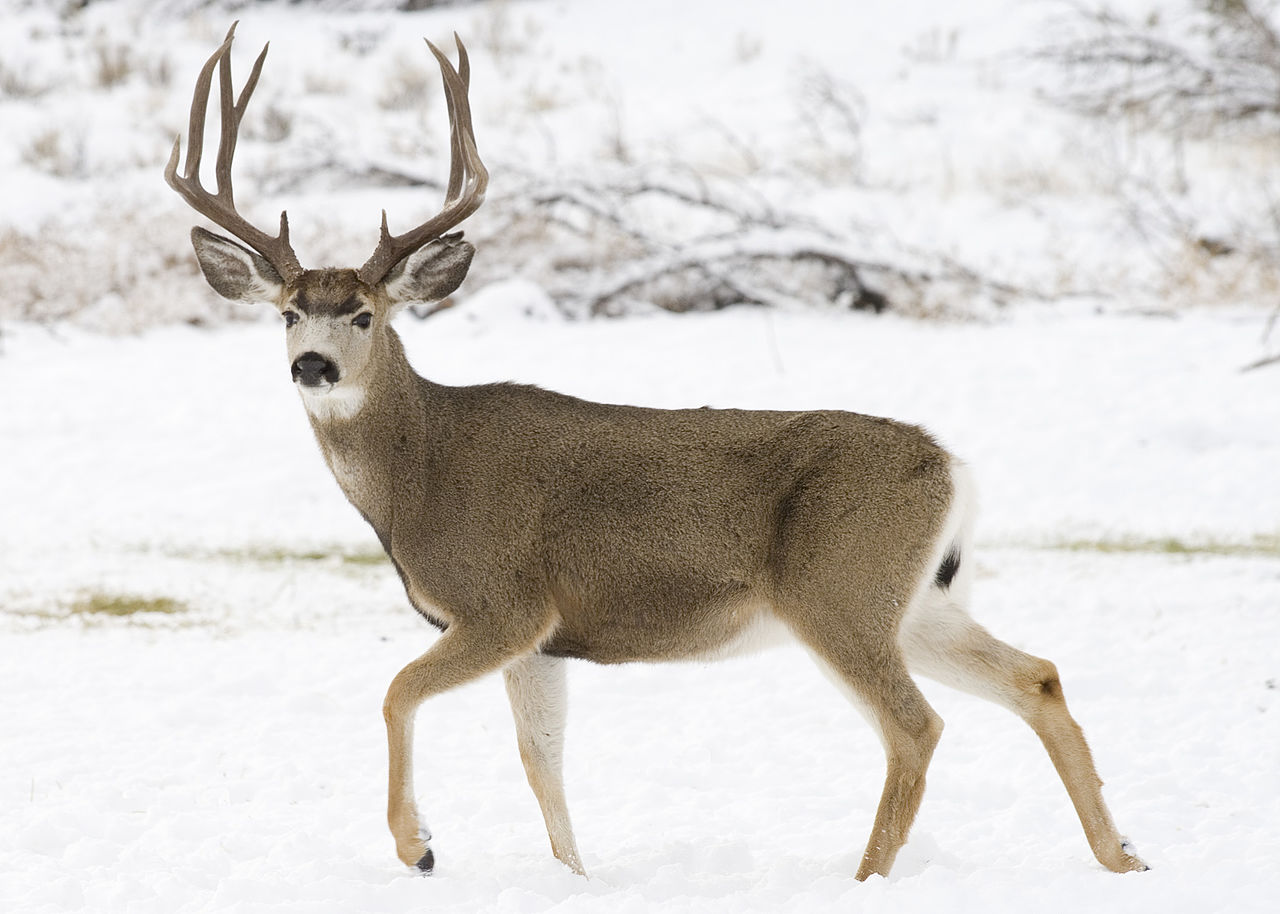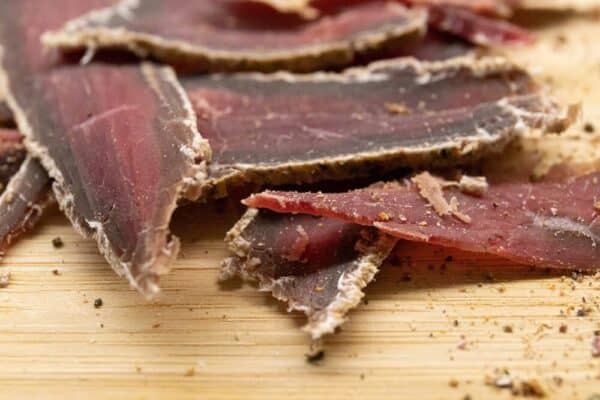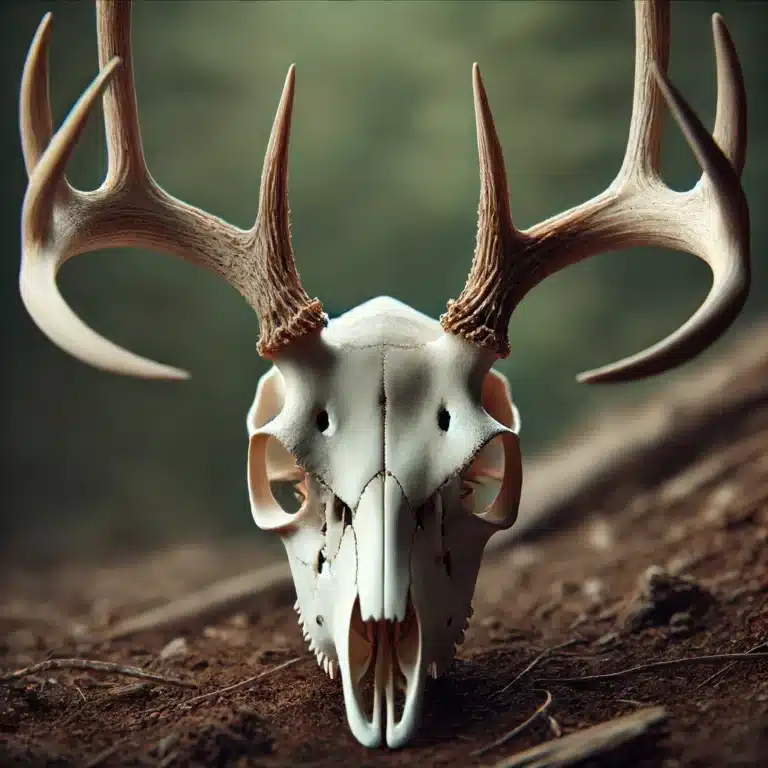The mule deer is a fascinating species found predominantly in western North America. Characterized by its large ears and differing significantly from its relatives, this creature has physical attributes and behavioral patterns that make it stand out.

Our exploration will explore their social structure. This includes intriguing aspects such as antler wrestling among males during mating season and their group formation. We’ll journey through the regions they inhabit across Western North America, tracing their seasonal migration patterns.
We’ll also examine mule deer’s dietary habits, comparing them to cattle and elk while highlighting their role within ecosystems due to selective feeding. Lastly, we’ll discuss threats facing these majestic creatures, like hunting activities for economic value or factors contributing to population decline, before wrapping up with an overview of their unique adaptations, such as night vision survival strategy distinguishing between female vs. male behaviors.
Understanding the Mule Deer
Mules have black foreheads and gray faces that make them stand out, while their white rump patches and cute little tails add a touch of flair. These color combos help them communicate and hide from sneaky predators.
But wait, there’s more. Mule dudes have forked antlers that double as weapons and love magnets. And let’s not forget their fabulous fur patterns. Talk about a fashion statement.
Why are They Called ‘mule’ Deer?
Well, it’s not just about the ears. These guys also have some moves in common with mules. When they’re scared or surprised, they bust out a fancy leap, just like donkeys do when they feel jumpy.
But hang on tight, as we still have much more to explore. In the following sections, I’ll explore their social lives, behavior quirks, preferred hangouts, and epic migration adventures. These deer are the real deal, thriving across diverse landscapes from Alaska to Mexico.
Behavior & Social Structure of Mule Deer
The mule deer is a fascinating species found predominantly across western North America. These deer, often called black-tailed deer, are known for their large ears and captivating behaviors.
Antler Wrestling Among Male Mules During Mating Season
Male deer engage in thrilling antler wrestling contests during the mating season. It’s like a deer version of WWE, where bucks lock antlers and push with all their might. Talk about a wild way to impress the ladies.
This intense competition helps establish dominance and determine who gets the girl. It’s like a deer dating show with more headbutting and fewer roses.
Polygynous Behavior In Group Formation
Female deer have a polygynous social structure, meaning one male has multiple female partners. It’s like a deer harem, where the buck is the king and the ladies are his loyal subjects.
This arrangement ensures genetic diversity within the herd and allows the dominant males to spread their superior genes. It’s survival of the fittest in the deer dating game.
Habitat & Migration Patterns
These deer are the ultimate survivors, making their homes in various habitats across western North America. From Alaska to Texas, these deer have conquered it all. They have even been found in Mexico.
Ecoregions Inhabited by Mules across Western North America
These tenacious animals have proven their remarkable adaptability from deserts to forests, mountains to suburbs. They’re like the real estate moguls of the animal kingdom. Western North America is their playground, including Northern California, where they roam freely and become the poster children for wilderness and open spaces. They’re the cool kids of the animal world.
Seasonal Migration Patterns
Mule deer are not only adaptable but also great at planning vacations. They migrate from low-elevation winter ranges to high-elevation summer ranges, following the same old trails their ancestors used. Talk about keeping traditions alive.
When winter comes knocking, they reverse their journey and head toward warmer climates with plenty of food. They’re like snowbirds but with hooves. These epic migrations can cover anywhere from 15 to 100 miles. It’s almost as if they’re running a long race, with plenty of nourishment stops on the way.
Understanding mule deer’s habitat preferences and migration patterns is crucial for conservation efforts. We must protect their natural corridors so future generations can witness these majestic creatures in all their glory. Let’s keep the mule deer party going.
Dietary Habits & Role within Ecosystems
Mule deer: the picky eaters of the animal kingdom. Unlike their grazing counterparts, these creatures have a refined palate, opting for herbaceous plants and woody shrubs. They’re like the food critics of the deer world.
Comparing grazing habits: cattle/elk vs. mules
Cattle and elk are the all-you-can-eat buffet enthusiasts, munching on grasslands without care. But mule deer? They’re the connoisseurs, carefully selecting their food based on taste and nutritional value. It’s like they have a Michelin star for browsing.
This selective browsing allows mule deer to feast on the best parts of plants, leaving the rest behind. They’re creating their gourmet salad, one leaf at a time.
Importance in the ecosystem: the gourmet gardeners
Mule deer aren’t just picky eaters; they’re also ecosystem superheroes. By choosing high-quality plant materials, they help maintain a balanced flora population. They’re like the master gardeners of nature, keeping everything in check.
But their influence extends beyond that. Mule deer make a tasty treat for their predators, like cougars, wolves, and coyotes – providing sustenance to help keep these carnivore populations in check. They’re like the fast food drive-thru for the carnivores, keeping their populations in check, too.
Remember that the mule deer are not just picky eaters but play an essential part in their environment with each bite. They play a vital role in the ecosystem, one bite at a time.
Threats to Mule Deer
Mule deer and city slickers who love lawns and gardens face severe challenges. Disease and habitat loss are affecting these majestic creatures.
The Hunting Economy
Mule deer hunting brings in a whopping $115 million every year in Colorado. That’s a lot of dough. We must act swiftly to safeguard these emblematic creatures, as their numbers are dwindling due to Chronic Wasting Disease (CWD), predation, and habitat loss.
Population Decline Factors
- Chronic Wasting Disease: CWD is a fatal neurological disorder that causes mule deer to waste away. No cure, no treatment. It’s a real bummer.
- Predators: Wolves, coyotes, mountain lions, oh my. These carnivores love snacking on mule deer, and it’s not helping their population numbers. Check out the impact of predators here.
- Habitat Loss & Fragmentation: Humans are the culprits here. We’re turning natural habitats into farms and cities, leaving mule deer nowhere to roam. It’s like a bad breakup.
The White River herd in Western Colorado is a prime example of these threats in action. The White River herd has experienced a drastic decline from its once abundant numbers of over 100,000 to only 32,000. Yikes. We must act fast to save these amazing creatures and their wide range across western North America.
Unique Adaptation Characteristics
The mule deer, a symbol of resilience and adaptability in western North America, has unique traits that help it thrive across its vast range. Let’s explore these peculiar characteristics.
Night Vision Superpowers
Mules have incredible night vision, making them the superheroes of the dark. While humans stumble around in the dark, these deer navigate effortlessly. This nocturnal advantage helps them avoid predators and feast on nutritious vegetation while we’re still rubbing our eyes.
Survival Strategy: Grass Bedtime
In addition to their night vision, white-tailed deer have a clever survival strategy. They create temporary beds, like a DIY fort, out of grass and leaves. These cozy hideaways provide safety from threats and harsh weather, proving that mule deer are the MacGyvers of the animal kingdom. In rare circumstances, mule deer found a person’s house and moved in (just checking to see if you are still reading).
Ladies vs Gentlemen
Female deer have a knack for finding safe havens to raise their young, while males are all about food. Females choose secluded areas away from predators, while males go for the buffet of abundant food sources. It’s like a gender-specific strategy for survival and satisfaction.
- Ladies First: Females prioritize safety over food when selecting fawn habitats. They prefer secluded areas away from roads and humans, with lower predation risk. California Department of Wildlife Resources confirms that female home ranges are smaller because they invest more in protecting their offspring.
- Gentlemen’s Club: Males, on the other hand, head straight to the all-you-can-eat buffet. They seek out areas with abundant food sources to recover from the exhausting battles they fought for mating rights. A study in the Journal of Mammalogy shows how bucks migrate longer distances than females in search of quality sustenance.
FAQs about Mule Deer
What’s so special about a mule deer?
The mule deer is one cool critter with its big, mule-like ears, fancy antlers, and killer night vision – like the James Bond of the Deer World.
What do you call a lady mule deer?
Like other deer species, females are known as’ does’- a classic name that never goes out of style.
What’s the biggest threat to mule deer?
Their population faces severe challenges, including habitat loss from pesky urbanization, nasty diseases, hungry predators, and the ever-changing climate – talk about a tough crowd.
Are mule deer in danger?
No. They aren’t currently on the endangered list, but they’re in a precarious position, so let’s keep an eye on these majestic creatures and do what we can to protect them.
Conclusion
Mule deer are fascinating creatures with unique physical characteristics and behaviors, like their large ears, which resemble those of a mule. During mating season, male mules engage in antler wrestling to establish dominance, while females exhibit polygynous behavior in group formation.
Mule deer inhabit various ecoregions across Western North America and have seasonal migration patterns. Unlike cattle and elk, they have a selective diet as they choose specific vegetation to feed on, playing a crucial role within ecosystems.
However, the species faces threats such as hunting activities and population decline.






